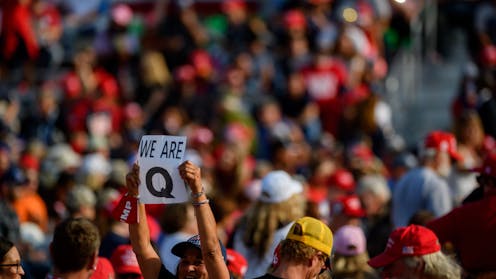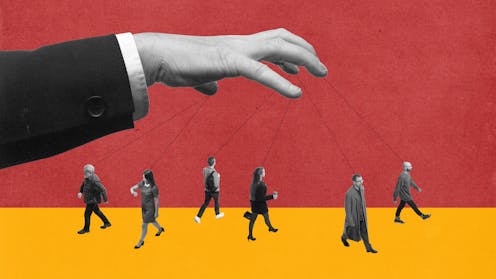Source: The Conversation – Africa – By Anthea Adams, Lecturer: Academic Staff Development, Rhodes University
Most universities and colleges have formal and informal programmes and initiatives to support student and staff development. Their goal is to create learning experiences that help students succeed academically. Typically, academic development practitioners design and run these programmes. They are usually academics themselves. To help students, they use tools like data analytics to design tutoring and mentoring programmes. For staff, development might include formal courses, webinars, workshops and seminars. Education researchers Anthea Adams, Sandra Williams, Patricia Muhuro and Charlene Van Wyk-Geduld reflect on their recent paper on academic development in South African higher education.
What is the role of academic development in South African higher education?
It started in the early 1980s when black students were first allowed to register at universities that had previously been reserved for white students.
After 1994 when South Africa became a democracy, the main aim of academic development was to help transform society by giving black students better opportunities to succeed at university.
Research on whether these efforts were making a difference in improving student learning, and our reflections, show a mismatch between what academic development is supposed to achieve and how it is being carried out in practice.
What is the mismatch between goals and practices?
Academic development has come a long way, mainly thanks to government support and funding. There is evidence of this in research and annual progress reports submitted to the Department of Higher Education and Training. This evidence clearly shows the positive impact of academic development efforts over the years.
But even with these strides, we can’t ignore a major concern: many black students drop out of university or do not progress with their studies as expected. This tells us that there’s a serious disconnect between what academic development aims to achieve and its actual practices.
One of the biggest red flags is the ongoing gap in graduation rates across different population groups. For example, the Council on Higher Education’s 2022 review of higher education highlighted that in 2018, white students were six percentage points more likely to complete their studies than black students.
Read more:
Why South Africa’s universities are in the grip of a class struggle
What’s also worrying is that South African curricula and learning approaches are not yet relevant to diverse learning contexts. Students, academic staff and professional organisations like the Higher Education Learning and Teaching Association of Southern Africa have all said that academic development practices may not sufficiently address the academic realities of the majority of students.
What lessons can we learn?
We propose that academic development work should be based on research that can genuinely support all students’ success.
A number of scholars have argued that the quality of current research on academic development work contributes to the mismatch between its goals and actual practices. The research is not yet as theoretical, scholarly and critical as it needs to be to help us fully understand and improve academic development work.
This critique helps us understand why academic development research often feels limited to one specific context. This is particularly true of research that looks into why some students are dropping out or struggling to complete their studies.
This kind of research doesn’t offer insights that help practitioners and academics think more broadly about how to apply the findings in different learning contexts.
Valuable work is being done by both veteran and less experienced academic development practitioners. Their efforts have influenced academic development work as we know it today. But we should respond to the observation that most academic development work is still, in practice, limited to one context.
What is the way forward?
Less experienced academic development practitioners and scholars may find it daunting to produce research rich in theory. Therefore, we propose working together in communities of practice to build networks and benefit from reciprocal mentorship opportunities.
Mentors can be peers or seasoned academic development practitioners and researchers. They can help each other unpack what it means to produce rigorous research based on real-life teaching and learning contexts.
Working alongside each other and sharing knowledge and expertise can be fulfilling. It can also be the catalyst for building theory that will advance an understanding of academic development work. Opportunities to form peer networks help academics develop confidence and competence as teachers and scholars.
This kind of work can happen naturally as long as the context is supportive. However, we recognise opportunities for both formal and informal reciprocal mentoring relationships. This is based on our reflections on our teaching experiences and engagements in postgraduate diplomas in higher education.
Several scholars support the proposal for national directives to develop academics as university teachers and scholars. Professional development initiatives, such as postgraduate diplomas, can be conducive learning spaces where academics can engage in the scholarship of teaching and learning.
In other words, supported by experienced facilitators, academics can use research and evidence to interrogate how they teach and how students learn.
Professional development initiatives are not a panacea for the mismatch between academic development goals and actual practices. However, they can be a place where academics help each other to build theory in academic development. Only then, by working together, can academics respond to challenges casting a shadow on academic development work.
![]()
The authors do not work for, consult, own shares in or receive funding from any company or organisation that would benefit from this article, and have disclosed no relevant affiliations beyond their academic appointment.
– ref. South African university programmes to support black students aren’t working. What needs to be done – https://theconversation.com/south-african-university-programmes-to-support-black-students-arent-working-what-needs-to-be-done-251954














